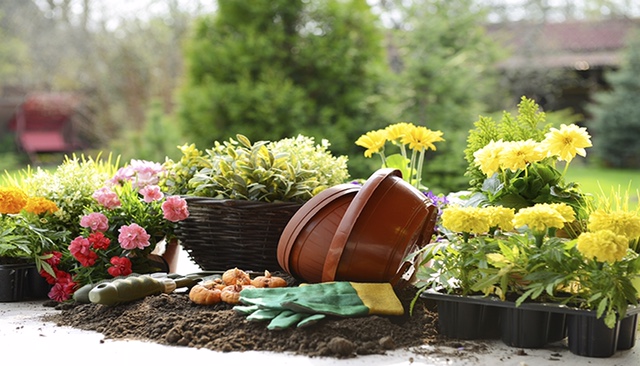Master Seasonal Planting for Veggie Gardens: Your Ultimate Guide

Are you dreaming of a thriving vegetable garden that yields fresh, delicious produce all year round? Imagine the satisfaction of harvesting crisp lettuce in spring, juicy tomatoes in summer, and hearty root vegetables in fall. Achieving this bounty isn't as daunting as it might seem. With a well-planned seasonal planting guide for vegetable gardens, you can transform your backyard into a flourishing oasis. Let's dive in and explore the secrets of seasonal gardening, vegetable growing seasons, and optimal harvesting.
Understanding Seasonal Gardening
The Importance of Timing
Timing is everything in gardening. Just like a well-orchestrated symphony, each plant has its own rhythm and season. Planting too early or too late can lead to disappointing results. By understanding the vegetable growing seasons, you can ensure that your crops thrive and yield their best.
Climate Zones and Planting Timelines
Your location's climate zone plays a crucial role in determining your planting timeline. The USDA Plant Hardiness Zone Map is an excellent resource to identify your zone and the optimal planting times for various vegetables. For example, cool-season crops like spinach and lettuce prefer the mild temperatures of spring and fall, while warm-season crops like tomatoes and peppers thrive in the heat of summer.
Creating Your Seasonal Planting Guide
Spring: The Season of New Beginnings
Spring is the time to start your garden with a burst of energy. Cool-season crops like lettuce, spinach, peas, and radishes are perfect for this time of year. These vegetables can tolerate the cooler temperatures and shorter days of early spring.

Summer: The Bounty of Warmth
Summer is the season of abundance. Warm-season crops like tomatoes, peppers, cucumbers, and beans flourish in the heat. These plants require longer days and warmer temperatures to grow and produce fruit. Ensure your garden is well-prepared with plenty of sunlight and consistent watering.
Fall: The Harvest Season
Fall is a time of transition and harvest. Cool-season crops like broccoli, cabbage, and kale can be planted in late summer for a fall harvest. These vegetables prefer the cooler temperatures and shorter days of autumn. Additionally, fall is an excellent time to plant garlic and overwintering crops like spinach and onions.
Winter: The Season of Rest
Winter might seem like a dormant time for gardening, but it's an opportunity to plan and prepare. In milder climates, you can grow cold-hardy crops like spinach, kale, and carrots. In colder regions, focus on protecting your soil with cover crops and planning your next season's garden.
Crop Rotation: The Key to Healthy Soil
Why Rotate Crops?
Crop rotation is a vital practice in seasonal gardening. By rotating your crops, you can prevent soil depletion, reduce pest and disease problems, and maintain soil health. Different plants have varying nutrient requirements and can either deplete or replenish the soil.
Planning Your Crop Rotation
To implement crop rotation effectively, divide your garden into sections and rotate the types of crops you plant in each section annually. For example, follow a four-year rotation plan:
- Year 1: Plant leafy vegetables and legumes.
- Year 2: Plant fruiting vegetables like tomatoes and peppers.
- Year 3: Plant root vegetables like carrots and beets.
- Year 4: Plant brassicas like broccoli and cabbage.
This rotation ensures that each section of your garden has a chance to recover and replenish its nutrients.
Optimal Harvesting: Maximizing Your Yield
Knowing When to Harvest
Harvesting at the right time is crucial for enjoying the best flavors and nutrients from your vegetables. Each crop has its own signs of readiness. For example, tomatoes should be picked when they are fully colored and slightly soft, while lettuce can be harvested when the leaves are young and tender.
Storing Your Harvest
Proper storage is essential for preserving the freshness and quality of your harvest. Different vegetables have varying storage requirements. For instance, root vegetables like carrots and beets can be stored in a cool, dark place, while leafy greens should be kept in the refrigerator.
Conclusion: Embrace the Seasons and Reap the Rewards
Mastering seasonal planting for vegetable gardens is a journey filled with rewards. By understanding the vegetable growing seasons, creating a well-planned planting timeline, practicing crop rotation, and optimizing your harvesting, you can transform your garden into a thriving oasis. Embrace the rhythm of the seasons, and you'll be rewarded with a bounty of fresh, delicious produce.
FAQs
-
What are the best cool-season vegetables to plant in spring?
- Cool-season vegetables like lettuce, spinach, peas, and radishes are ideal for spring planting.
-
How do I determine my planting zone?
- You can determine your planting zone by referring to the USDA Plant Hardiness Zone Map, which provides detailed information based on your location.
-
What is the benefit of crop rotation?
- Crop rotation helps prevent soil depletion, reduces pest and disease problems, and maintains soil health by ensuring that each section of the garden has a chance to recover and replenish its nutrients.
-
When is the best time to plant warm-season crops?
- Warm-season crops like tomatoes, peppers, cucumbers, and beans should be planted in summer when the temperatures are warmer and the days are longer.
-
How can I store my harvested vegetables to maintain freshness?
- Different vegetables have varying storage requirements. Root vegetables can be stored in a cool, dark place, while leafy greens should be kept in the refrigerator. Proper storage helps maintain the freshness and quality of your harvest.

By following this comprehensive guide, you'll be well on your way to mastering seasonal planting and enjoying a flourishing vegetable garden all year round. Happy gardening!
0 Response to "Master Seasonal Planting for Veggie Gardens: Your Ultimate Guide"
Post a Comment